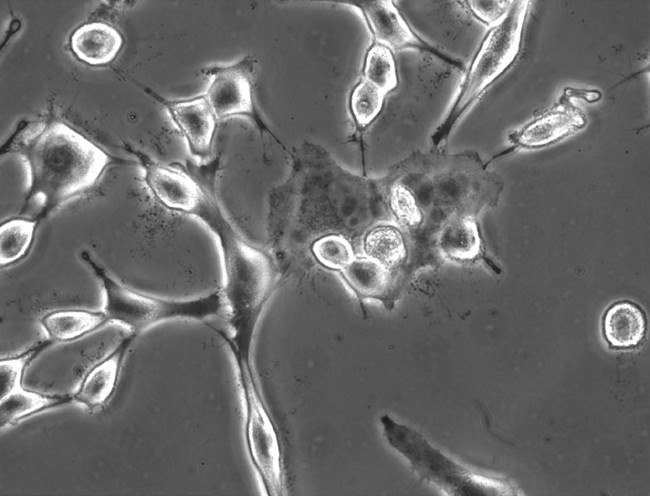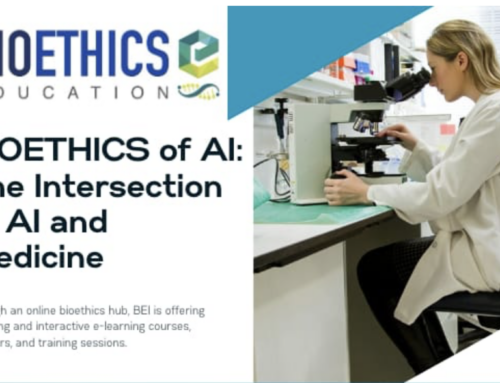By Michael S. Dauber, MA, GBI Visiting Scholar
According to a report in The MIT Technology Review, researchers in a lab based in Portland, Oregon have successfully created genetically modified human embryos for the first time in U.S. history, using a technique called CRISPR. The project, directed by Shoukhrat Mitalipov, a researcher at Oregon Health and Science University, was published in Nature, and consisted of modifying the genes of human embryos to prevent a severe, genetically inherited heart condition. The embryos were destroyed several days after the experiments.
CRISPR stands for “clustered, regularly interspaced, short palindromic repeats.” It is a genetic editing technique that allows scientists to cut out pieces of DNA and replace them with other pieces. CRISPR originated as a naturally occurring cellular defense system in certain bacterial that allows a cell to defend itself from foreign genetic material injected into cells by viruses. RNA strands that match the problematic genes bind with the piece of DNA to be removed, and enzymes work to remove the defective material. When CRISPR is used to edit the human genome, scientists apply CRISPR RNA strands and the corresponding enzymes that match the genes they wish to edit in order to extract the problematic genes.
Mitalipov is not the first scientist to use CRISPR to edit the human genome. Scientists in China have been using the technique in research using human embryos dating back to 2015. One notable study consisted of attempts to make cells resistant to HIV. Another controversial study involved the injection of CRISPR-modified cells into a patient with advanced lung cancer. However, Mitalipov’s study is unique in that it purports to have avoided a problem called mosaicism, in which the modifications were effective in only a number of cells, preventing significant changes from taking hold.
The controversial move comes at a time when scientists, politicians and bioethicists are still debating the ethics of creating genetically modified human beings: while many herald genetic modification techniques as the future of medicine and as a viable path for research into disease prevention, others worry that the proliferation of genetic editing techniques opens the door for modifications that may be morally problematic. Many individuals worry that cosmetic modifications such as choosing the hair color or height of one’s offspring, or enhancements that affect our capacities, are unethical, and that each attempt we make to edit the human genome makes such experiments more and more likely.
The research is also another event in the long-debated stem cell controversy. Many individuals believe it is morally wrong to create and destroy embryos for research because they have some level of moral status. If they do have some degree of moral status, destroying embryos for research might be morally wrong, even if they might not have the same status as human beings that have already been born. Others, however, have pointed to the significant potential that research on embryos will provide effective vehicles for curing many genetically inherited diseases and disabilities.
Scientists and bioethicists have generally agreed, however, that the technique would certainly be helpful in preventing genetic-based diseases and disabilities, and much of the research using CRISPR has been geared towards such pursuits. Speaking about Mitalipov’s work, NYU bioethicist Arthur Caplan said, “I’m not surprised that they were looking at genetic diseases to try and see if they could target them, because that’s exactly where I think the future inevitably leads.”
In line with much of the current thinking on genetic editing, Mitalipov’s work focused on correcting genetic defects that lead to early death, and thus the controversy over his experiment largely stems from the lack of regulations involving genetic editing techniques. Although many bioethicists and scientists have condemned some kinds of experiments and suggested that we should wait before fully exploring techniques like CRISPR, there are no laws that completely prevent scientists from undertaking any kind of studies they want. There may be restrictions on funds received from specific sponsors or from governments in many countries, and the institutional review boards of specific research centers might object, but scientists are relatively free to undertake any experiment they wish as long as they have the means from private funding.
In the U.S., the only laws on record prohibit the use of government funds to perform genetic experiments on human embryos. Scientists may use whatever private funds they can aquire. Internationally, the Chinese government allows the use of government funds to pursue CRISPR experiments: as such, many major developments in the technique have come from China in recent years. Mitalipov’s experiment represents one of the first major steps taken by American labs into serious attempts to edit the human genome.
As we continue to watch CRISPR develop, it is important to track the sorts of experiments scientists undertake. While many scientists may agree to follow the unofficial rules and refrain from performing experiments beyond the scope of disease and disability prevention, specific laws may need to be enacted to clarify the current ethical landscape, which is vague at best. It only takes one major study to gain knowledge that changes the playing field forever, and we must be careful in determining what that playing field should look like.
Michael S. Dauber is a bioethicist who has served as a clinical ethicist and works as an institutional review board coordinator. He received an MA in bioethics from NYU and a BA in philosophy and journalism from Fordham University.








Leave A Comment